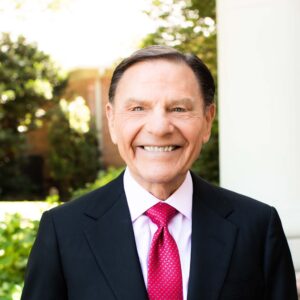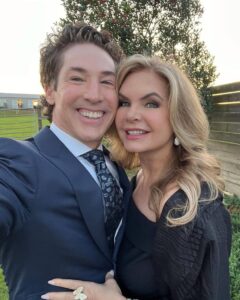Courtney Morgan, the general manager of Alabama, has an office that looks like a classy cigar lounge. Charcoal paint is used on the walls. A seating space close to the door is anchored by a leather couch. And Morgan turns on a number of lamps that create a cozy and welcoming glow rather than ruining the atmosphere with glaring halogen lights overhead.
Behind his desk, a big canvas print completes the ensemble. Instead of a typical action shot, Morgan requested a picture of the well-known pass-rusher Derrick Thomas, who was his childhood idol. “Anything other than football,” he asked. The result was a black-and-white headshot of Thomas in a suit, sitting in an office with a phone to his ear and his shoes put up on a desk next to an open briefcase, provided by Kent Gidley, director of photography at UA. The 1988 Heisman Trophy campaign for the school did not include the shot. If it had, by now it would be all over campus, on T-shirts, in dining establishments, and on the walls of dorm rooms. It exudes coolness.
It also serves as a reminder of the positive things that both previous and present coworkers have said about Morgan: that he has a keen sense of what is and is not hip, which is important when hiring. The former defensive lineman for Michigan, though, is all business. He recently discussed the challenges of roster management, brand building, and how these factors influence name, image, and likeness in an interview with 247Sports. A player from out of state handling a family problem, and an assistant coach organizing the details of an unexpected recruit’s visit to campus were among the calls he took in the interim. After a few days away from the team, head coach Kalen DeBoer visited at one point. Based on the bag slung over his shoulder, it appeared that he had not yet made it to his own workspace. His first stop was Morgan.
According to DeBoer’s records, without Morgan, the lone employee he sent to Tuscaloosa in January, Washington would not have advanced to the championship game the previous season. Other staff members joined him later. Morgan was referred to by DeBoer as “head of the recruiting department” and as a “pillar of the program.” It is much more than just scouting, by the way.
Former Wolverines cornerback Will Johnson described him as a “undercover guy doing everything behind the scenes” on Michigan’s staff. However, he is no longer disregarded. In college football, Morgan represents a position that is becoming increasingly significant, and he will play a major role in deciding whether Alabama will remain the league’s dominant team once Nick Saban retires. At the core of the Saban dynasty was a simple yet elusive strategy: find and nurture the world’s top football players.
With the change, Saban’s roster might have been completely dismantled. Rather, DeBoer, Morgan, and the rest of the coaching staff managed to keep it together, mostly by keeping important players like defensive back Malachi Moore and quarterback Jalen Milroe, but also by adding players who could make a big difference, such as Michigan safety Keon Sabb, Washington standout center Parker Brailsford, wide receiver Germie Bernard, and tight end Josh Cuevas. They strengthened the offensive line (most notably by welcoming back Freshman All-American left tackle Kadyn Proctor) and the secondary (signed veteran DBs DaShawn Jones, Kameron Howard, and King Mack) in the spring to add even more quality. The No. 2-ranked recruiting class in the country, which includes 11 commits with a grade of 90 or higher—among them Texas quarterback Keelon Russell, who was named Elite 11 MVP last week—makes the future beyond this season extremely bright. The cacophony of folks who had doubts about DeBoer and Co.’s ability to recruit in the SEC has recently died down to a whisper.
Morgan downplays his own contribution, praising others such as DeBoer, the assistant coaches, Kevin Green, the recruiting coordinator, Jatavis Sanders, the director of recruiting strategy, Ashliegh Kimble, Carrigan Johnson, the associate director of football recruitment, Bob Welton, the director of player personnel, and the assistant DPPs Eron Hodges, Tony Jones, and Jerret McElwain. The list is endless. Morgan stated, “Because in the new era of NIL, it’s transformation over transactions,” meaning that everyone they chose for the recruiting staff has to be relatable and believe in the power of connection.
DeBoer described Morgan as “the best there is at building relationships.” He appreciates the talks and interactions he has with the individuals he works and interacts with, but he also recognizes the significance of it. In reality, it’s anybody, but it’s recruits and recruits’ parents. Other than being a college football general manager, he would succeed in any role. He brings ideas to the table since he has a keen sense of reality and is always considering how to improve things.”
———
In the 1990s, when Morgan was growing up in Los Angeles, pro sports was the only industry that had general managers. In college, the role of recruiting coordinator hadn’t even been segregated into its own post; usually, the extra duties fell to an assistant coach.
While things were simpler back then, recruiting from schools outside of your neighborhood wasn’t always easy. Recall that there were no readily available internet recruiting profiles, and there was no Hudl or YouTube to which one could post highlights. It wasn’t until Morgan’s final year of high school when Rivals.com went live.







